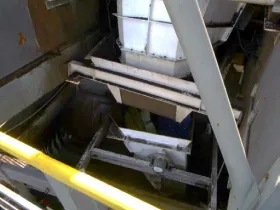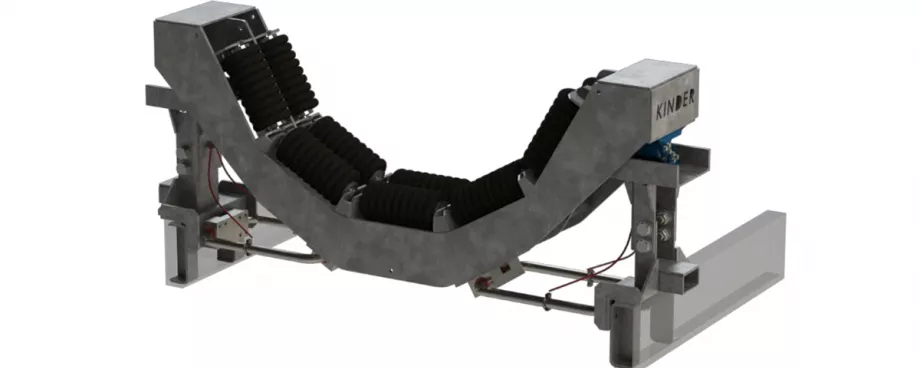2. Conventional Options for Reducing Transfer Impact
An ideally designed transfer is one where the following exists:

Fig. 6: Typical Hood and Spoon (105° acute system to system angle change, 5 m drop height).
- Equivalent free fall of material is less than 1.2 meters.
- Material feed is in the same direction as belt travel.
- Loading area of the belt is horizontal.
- It was shown by Conveyor Equipment Manufacturers Association [2] that chutes and skirt boards were designed to contain and settle the product on the belt.
The above is not always possible due to topographical or other design constraints. Given the need to protect the belt from impact in a system transfer that is not ideal, many solutions exist, with varying advantages and disadvantages.
2.1 Hood and Spoon
Hood and spoon chute designs redirect the product stream from the preceding system gradually to be as close as possible to the following conveyor system in height and speed.
| Advantages | Disadvantages |
|---|---|
|
|
2.2 Rock Boxes
A rock box allows the material to be retained in a box section of the chute before rebounding to the new path. Multiple ‘box’ sections of the chute can exist to gradually change the direction of the material path from one box to the next.
| Advantages | Disadvantages |
|---|---|
|
|

Fig. 7: Rock Box.




















